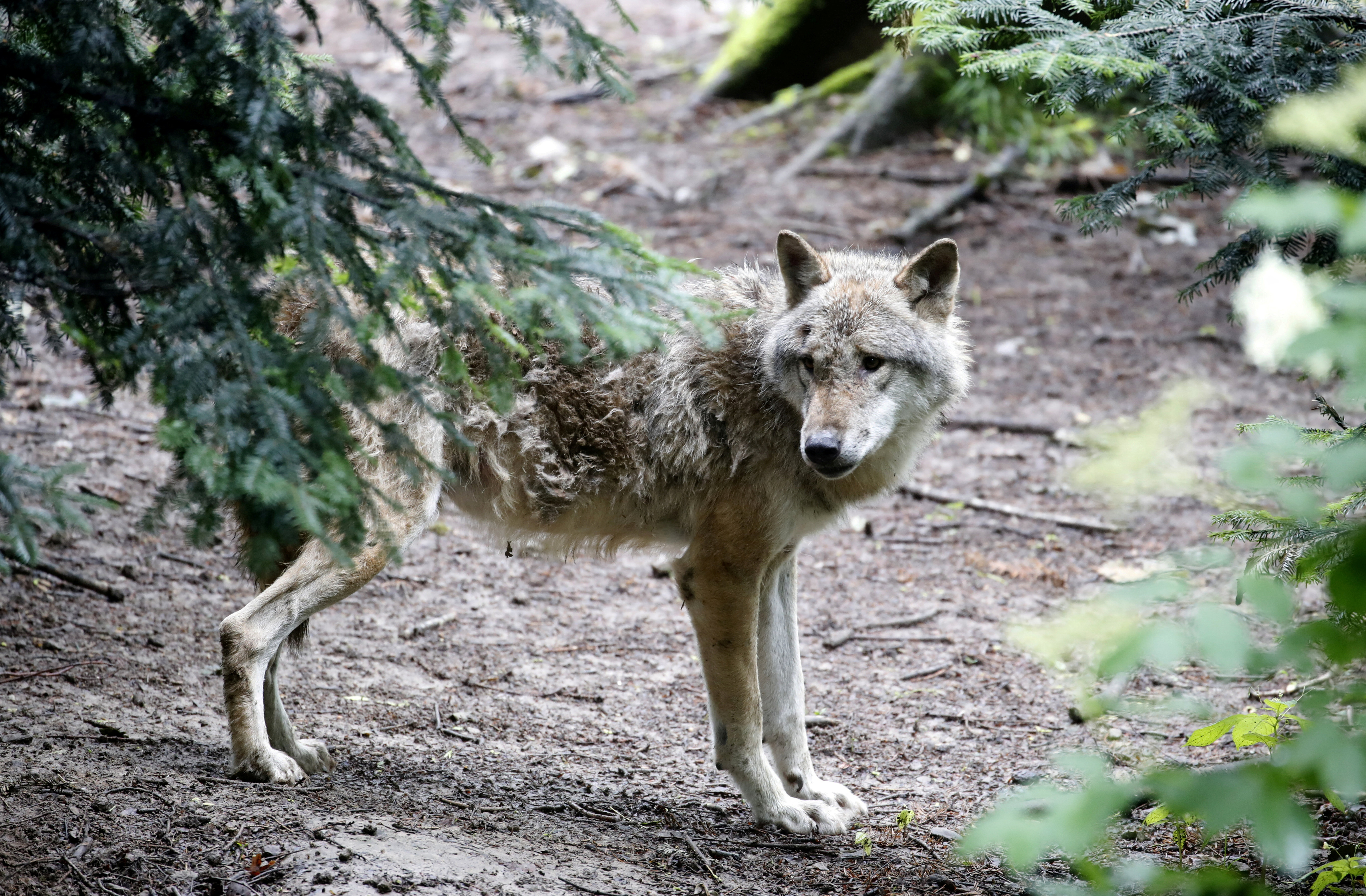AUSTRALIA
Experts confirm white whale carcass on Victorian beach is not Migaloo
Victorian environment officials said images of the dead humpback proved it was not well-known humpback

A white whale that washed up on a Victorian beach is not the well-known albino humpback Migaloo, according to the state’s environment department.
The carcass of an albino whale was found at a beach in Mallacoota in the state’s far east this week, sparking concern it could be the beloved Migaloo, who was first spotted off Byron Bay in 1991.
But Peter Brick, of Victoria’s Department of Environment, Land, Water and Planning (DEWLP), said images of the carcass that had been viewed by officials proved it was not Migaloo.
“DELWP officers have examined images of the dead humpback whale at Mallacoota and have confirmed it is a sub-adult female,” Brick told AAP. “Migaloo is a male.”
It has been two years since Migaloo, who was named using an Indigenous word for white person, was last spotted.
Macquarie University wildlife scientist Vanessa Pirotta told the ABC such long spells without a sighting were not uncommon.
She also said that after viewing photos of the whale it may not even be a white whale, but one that has lost its pigmentation after dying because of weather exposure.
Scientists have genetic samples from Migaloo, meaning that they can test any remains to confirm whether they belong to him.
“It seems to be most likely a white whale, or at least a whale that has been a darker pigmentation that has passed out at sea and washed ashore and been weathered over time,” Dr Pirotta said.
Dead whale which washed up at Mallacoota is not Migaloo
Wildlife officers say a whale which was found washed up at Mallacoota, in Victoria's east yesterday is not the famous albino humpback Migaloo.
Key points:The white whale was found at a remote beach at Mallacoota in Victoria's east
Wildlife officers say analysis of photos shows the whale is a female, while Migaloo is male
People have been warned to stay away from the carcass due to health risks and potential predators
The whale carcass was discovered on Saturday morning at a beach at Mallacoota which is only accessible by water.
Officers from Victoria's Department of Environment, Land, Water and Planning [DELWP] said analysis of images of the carcass show that the whale is not Migaloo.
"DELWP Officers have examined images of the dead Humpback Whale at Mallacoota and have confirmed it is a sub-adult female. Migaloo is a male," DELWP Regional Agency Commander Peter Brick said.
"DELWP and Parks Victoria staff will be further assessing the carcass over coming days."
DELWP said it was an offence for people or their dogs to be within 300 metres of a beached whale, and the animals were protected under the Wildlife Act whether they were alive or dead.
Rather than try to remove the whale from the remote location, DEWLP's Principal Officer for Wildlife Emergencies, Rodney Vile, said it will be left on the beach.
"Currently we're planning to leave it in place, and let it decompose naturally," he said.
"That's our preferred approach but it really depends with deceased whales like this, the location of it and leaving it to decompose naturally versus human safety about where it's actually located.
"There are warnings out for people to avoid going near the whale or touching the whale… and also warnings around the potential for sharks to be in the area as well."
Mr Vile said DELWP will provide ongoing updates to the Mallacoota community.
Scientists will still conduct genetic testing on the whale.
Macquarie University wildlife scientist Vanessa Pirotta said photos of the animal did not confirm that it was an albino whale.
"It seems to be most likely a white whale, or at least a whale that has been a darker pigmentation that has passed out at sea and washed ashore and been weathered over time," Dr Pirotta said.
Dr Pirotta said barnacles on the throat of the whale carcass appeared to be covering skin which was not white, casting doubt on it being a true albino whale.
"Over time, these animals can pass [away] and their bodies weather, there's sun exposure and their skin can come off," she said.
Whale carcass still valuable for scientists
Dr Pirotta said the whale carcass would still be highly prized by marine scientists.
"A stranded whale like this is a huge contribution to science … because often we don't have a whale wash up in an area that can be accessible to science," she said.
"Measurements and samples, genetics will be taken from this individual by the appropriate authorities."
Dr Pirotta warned people not to approach the animal as it could be carrying diseases, and could attract predators such as sharks to the area.
Rodney Vile said DELWP is working with the Victorian Fisheries Authority about how long shark warnings will need to be in place.
He said the time it takes whales to decompose depends on the size and species, as well as wave action and temperature.
By Bridget Judd
Washed up white whale not Migaloo.
The discovery of a white whale carcass on a beach in far-east Victoria sparked fears for Migaloo, the elusive humpback who hasn't been spotted in two years.
But wildlife officers now say an analysis of images shows that it's not the iconic whale.
"DELWP Officers have examined images of the dead Humpback Whale at Mallacoota and have confirmed it is a sub-adult female. Migaloo is a male," Victoria's Department of Environment, Land, Water and Planning Regional Agency Commander Peter Bick said.
The case of mistaken identity isn't all that surprising.
While some 35,000 humpback whales migrate along the east coast of Australia each year, Migaloo is one of just a handful of known white humpback whales worldwide — and the most famous.
Here's what you need to know.
Who is Migaloo?
It's not hard to understand how Migaloo — meaning "white fella" in some Indigenous languages — earned his moniker.
First discovered in 1991 off Byron Bay, the humpback's albino appearance is the result of a variation in the gene responsible for the colour of his skin.
While it's attracted the attention of whale watchers across the globe, the condition has been associated with reduced heat absorption in colder waters, increased conspicuousness to predators, increased eye and skin sensitivity and visual impairment.
Despite this, the 40-tonne, 15-metre humpback whale made it to adulthood and is believed to be aged in his 30s.
Migaloo is protected under Queensland and Commonwealth government legislation, prohibiting boats from being within 500 metres of him.
Are there other white humpback whales?
While Migaloo is one of the world's most recognisable whales, he's not alone.
There are three to four other known white humpback whales, including Bahloo, Willow and Migaloo Junior (although it's unclear if they are related).
Unlike Migaloo, however, these animals have some black spots on their body, leading researchers to believe they have a condition called leucism, or hypo-pigmentation.
Is it Migaloo? The answer is no
While there were initially concerns for Migaloo's welfare, officers from Victoria's Department of Environment, Land, Water and Planning [DELWP] said analysis of images of the carcass show that it is not the same whale.
"DELWP Officers have examined images of the dead Humpback Whale at Mallacoota and have confirmed it is a sub-adult female. Migaloo is a male," DELWP Regional Agency Commander Peter Bick said.
"DELWP and Parks Victoria staff will be further assessing the carcass over coming days."
DELWP said it was an offence for people or their dogs to be within 300 metres of a beached whale, and the animals were protected under the Wildlife Act whether they were alive or dead.
Scientists will still conduct genetic testing to confirm the whale is not Migaloo
Has this happened before?
Similar concerns were sparked back in 2011, when the carcass of a white whale was discovered off Palm Island, near Townsville.
But after viewing photos and video footage, the Whale Research Centre found the humpback had some black markings and was not the same animal.
At the time, researchers noted that whales go belly up when they die, and as they are white underneath, some may mistake them for the iconic whale.





![Baker was not shy to call out the evil of the rising Nazi power in Germany, declaring in 1938 that she would kill [Nazis] with her own hands if necessary.](https://nypost.com/wp-content/uploads/sites/2/2022/07/jobaker1.jpg?w=1024)









